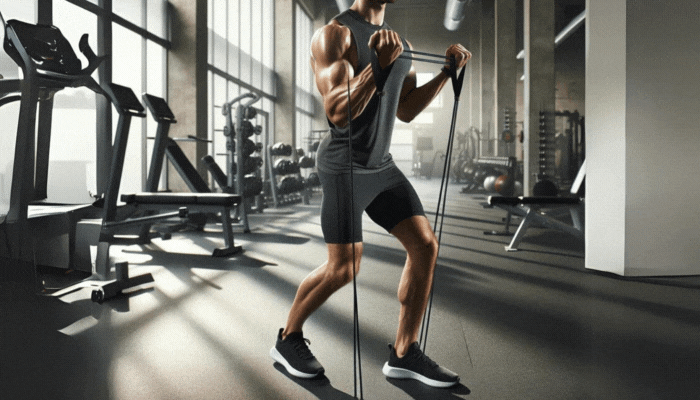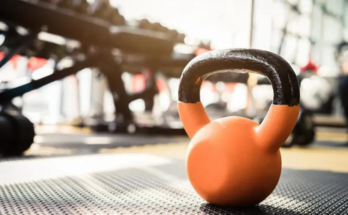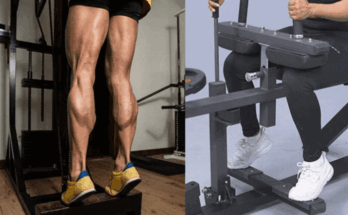Cable Pulldown Biceps Curl: An Effective Arm Strengthening Exercise
In the realm of fitness and bodybuilding, diversification of workout routines is key to achieving comprehensive muscle development and avoiding plateaus. The Cable Pulldown Biceps Curl is a unique exercise that combines elements of pulldowns and curls to target the biceps in a novel way. This article delves into the essence of this exercise, offering a guide on its execution, benefits, and the muscles it engages.

Description:
The Cable Pulldown Biceps Curl is an innovative resistance exercise performed using a cable machine. This exercise is designed to isolate and target the biceps muscles through a combination of a downward pulling motion and a curling action. Unlike traditional curls, this exercise applies continuous tension on the biceps from a top-down angle, which can lead to enhanced muscle engagement and growth over time.
How to Do it:
Executing the Cable Pulldown Biceps Curl with proper form is crucial for maximizing its effectiveness and minimizing the risk of injury. Here’s how to do it:
1. Set Up: Attach a straight bar to the high pulley of a cable machine. Choose a weight that allows you to perform the exercise with good form while still challenging your muscles.
2. Positioning: Stand facing the cable machine with your feet shoulder-width apart. Grasp the bar with an underhand grip (palms facing up) at about shoulder-width apart.
3. Execution:
- Begin by retracting your shoulder blades slightly and engaging your core to maintain a stable posture.
- Keeping your elbows close to your body, exhale as you pull the bar down smoothly in a curving motion towards your thighs.
- Once the bar reaches the top of your thighs, squeeze your biceps hard at the bottom of the movement for a second.
- Inhale as you slowly return the bar to the starting position with a controlled motion, ensuring that your biceps are under tension throughout the movement.
4. Repetition: Perform the exercise for 3-4 sets of 8-12 repetitions, or as fits into your workout routine.
Benefit:
Incorporating the Cable Pulldown Biceps Curl into your routine offers several benefits, including:
Enhanced Biceps Hypertrophy: The unique angle and continuous tension provided by the cable machine stimulate muscle growth effectively.
Improved Muscle Definition: This exercise can help define the shape and appearance of the biceps due to its targeted approach.
Increased Strength: Regularly performing this exercise can lead to improvements in overall arm strength, benefiting performance in other lifts and daily activities.
Versatility: Adjustments in grip width and weight can easily modify the exercise, making it suitable for various fitness levels and goals.
Muscles Worked:
The primary muscle worked during the Cable Pulldown Biceps Curl is the **biceps brachii**. This muscle comprises two heads (the long head and the short head) that run along the front of the upper arm. The exercise also engages the **brachialis** and **brachioradialis** to a lesser extent, which are muscles of the upper arm and forearm, respectively, contributing to the overall development of arm strength and size.
In conclusion, the Cable Pulldown Biceps Curl is a valuable addition to any arm-strengthening regimen. Its unique execution offers a refreshing variation to traditional biceps exercises, promoting growth, strength, and endurance. Always prioritize form and control over heavy lifting to reap the maximum benefits from this effective exercise.
Band Biceps Curl: Enhancing Arm Strength and Flexibility
The Band Biceps Curl stands out as an effective, versatile exercise within the realm of resistance training, particularly for those seeking to enhance arm strength and muscle tone without relying on heavy weights or sophisticated gym equipment. This exercise utilizes resistance bands to create tension, providing a unique challenge to the muscles. The following article explores the Band Biceps Curl in detail, including its execution, benefits, and the muscles it targets.

Description:
The Band Biceps Curl is a resistance exercise performed with elastic bands that offer an alternative to traditional weightlifting equipment. By utilizing the unique resistance profile of bands, which increases as they stretch, this exercise places a different kind of stress on the biceps, potentially leading to improved muscle growth and strength. The simplicity and portability of resistance bands make this exercise accessible anywhere, from a home gym to a hotel room.
How to Do it:
Proper technique is crucial when performing the Band Biceps Curl to ensure effectiveness and prevent injury. Here’s how to execute this exercise correctly:
1. Preparation: Select a resistance band suitable for your strength level. Stand on the middle of the band with your feet shoulder-width apart for a stable base. If you need more resistance, widen your stance or use a thicker band.
2. Grip: Hold the ends of the band or the handles if your band has them, with your palms facing forward (supinated grip). Ensure your hands are aligned with your shoulders.
3. Execution:
- Start with your arms fully extended, keeping your elbows close to your torso. This is your starting position.
- Exhale as you curl your hands towards your shoulders by contracting your biceps. Keep your upper arms stationary, moving only your forearms.
- Squeeze your biceps hard at the top of the curl, then hold for a moment.
- Inhale as you slowly lower your hands back to the starting position, maintaining control and tension in the bands.
4. Repetition: Aim for 3-4 sets of 10-15 repetitions, adjusting as necessary to fit your fitness level and goals.
Benefit:
The Band Biceps Curl is not just a simple alternative to dumbbell curls; it offers distinct advantages:
Adaptable Resistance: The resistance of the band increases with its stretch, challenging your muscles through the entire range of motion and promoting growth.
Joint-Friendly: The elastic nature of resistance bands provides a more joint-friendly alternative to free weights, reducing the risk of injury.
Versatility and Portability: Bands are lightweight and portable, allowing you to perform this exercise anywhere. You can also easily adjust your stance or band thickness to change the resistance level. Enhanced Muscle Activation: The constant tension from bands demands increased muscle activation, potentially leading to better strength gains and muscle tone.
Muscles Worked:
The primary target of the Band Biceps Curl is the **biceps brachii**, a two-headed muscle that runs from the shoulder to the elbow. This exercise effectively isolates the biceps, engaging both the long and short heads, which are responsible for flexing the elbow and supinating the forearm. Additionally, the **brachialis** (an upper arm muscle that lies beneath the biceps) and the **brachioradialis** (a forearm muscle that contributes to flexing the elbow) receive secondary engagement, supporting the movement and contributing to overall arm development.
Incorporating the Band Biceps Curl into your workout routine can offer a refreshing change of pace and additional benefits beyond what traditional weights can provide. Its flexibility and joint-friendly nature make it an excellent choice for individuals of all fitness levels looking to enhance their arm strength, muscle tone, and overall physical health.
Single Dumbbell Spider Hammer Curl: A Precision Tool for Bicep and Forearm Development
The Single Dumbbell Spider Hammer Curl is a nuanced, effective exercise designed to enhance arm muscularity, focusing on the biceps and forearms. This variation combines the isolation capabilities of spider curls with the neutral grip benefits of hammer curls, making it a potent addition to any arm workout routine. This article explores the technique, benefits, and targeted muscles of the Single Dumbbell Spider Hammer Curl.

Description:
The Single Dumbbell Spider Hammer Curl is performed using a single dumbbell and a bench. Unlike traditional curls, this exercise places the body in a prone position (lying face down) on an incline bench. This position stabilizes the upper body, eliminating momentum and focusing the workload directly on the biceps and brachialis. The neutral grip (palms facing each other) used in hammer curls emphasizes not only the biceps but also the forearm muscles, offering a comprehensive arm workout.
How to Do it:
Performing the Single Dumbbell Spider Hammer Curl with correct form is crucial for maximizing its effectiveness and minimizing the risk of injury. Here’s a step-by-step guide:
1. Setup:
– Set an incline bench to a 45-degree angle.
– Hold a dumbbell in one hand with a neutral grip (palm facing inward towards your body).
2. Position:
– Lie face down on the bench, letting your arm with the dumbbell hang straight down towards the floor.
– Your other hand can grip the bench for stability.
– Ensure your feet are firmly planted on the ground for support.
3. Execution:
- Exhale and curl the dumbbell upwards towards your shoulder, keeping your upper arm and elbow stationary.
- Squeeze your biceps at the top of the movement for optimal muscle contraction.
- Inhale and slowly lower the dumbbell back to the starting position, maintaining control throughout the descent.
4. Repetition: Perform 3-4 sets of 8-12 reps on each arm, adjusting the weight as needed to ensure proper form and adequate challenge.
Benefit:
The Single Dumbbell Spider Hammer Curl offers several key benefits:
Isolation: The prone position on the bench helps isolate the biceps by minimizing the involvement of other muscles and reducing momentum.
Increased Tension: Maintaining a neutral grip increases tension on both the biceps and the forearm muscles throughout the exercise.
Improved Muscle Definition and Strength: Targeting these muscles effectively can enhance arm definition, strength, and overall aesthetic appearance. Versatility: This exercise can be easily integrated into arm, upper body, or full-body workout routines.
Muscles Worked:
The primary focus of the Single Dumbbell Spider Hammer Curl is on the following muscles:
Biceps Brachii: The main muscle targeted, especially its long head, providing the bulk of the curling force.
Brachialis: Located beneath the biceps, this muscle assists in flexing the elbow and becomes more engaged due to the hammer grip.
Brachioradialis: A muscle of the forearm that is also worked more intensively with the neutral grip, contributing to forearm thickness and strength. Incorporating the Single Dumbbell Spider Hammer Curl into your arm training regimen can significantly enhance the strength, definition, and appearance of your biceps and forearms. By focusing on proper form and gradually increasing the weight, you can ensure continuous improvement and development of these crucial arm muscles.
Cable Curl: A Cornerstone Exercise for Biceps Development
The Cable Curl is a popular exercise among fitness enthusiasts for its effectiveness in targeting the biceps brachii with a constant tension that is hard to replicate with free weights. Utilizing a cable machine, this exercise allows for a range of motion and resistance that can be adjusted to suit various training levels and goals. Here, we delve into the Cable Curl, detailing its execution, benefits, and the primary muscles it engages.

Description:
Cable Curls are performed using a cable machine, which offers a smooth, continuous resistance throughout the entire range of motion of the curl. This exercise is designed to isolate and target the biceps muscles, enhancing both muscle size and strength. The versatility of the cable machine also allows for variations in grip and posture, enabling the targeting of different parts of the biceps muscle group.
How to Do it:
Proper execution of the Cable Curl is essential for maximizing its benefits and minimizing the risk of injury. Follow these steps to perform the exercise correctly:
1. Setup:
- Attach a straight bar or an EZ-bar attachment to a low pulley on a cable machine.
- Select an appropriate weight on the machine that will allow you to perform the exercise with good form while still challenging your muscles.
2. Starting Position:
- Stand facing the cable machine with your feet shoulder-width apart for stability.
- Grasp the bar with an underhand grip (palms facing upwards), hands shoulder-width apart.
- Keep your elbows close to your torso. This is your starting position.
3. Execution:
Exhale as you curl the bar towards your chest, keeping your upper arms stationary. Only your forearms should move.
Continue to curl the bar until your biceps are fully contracted, and the bar is at shoulder level. Hold this position for a moment, squeezing your biceps.
Inhale as you slowly lower the bar back to the starting position in a controlled manner.
4. Repetition: Perform 3-4 sets of 8-12 repetitions, adjusting the weight as necessary to match your fitness level and goals.
Benefit:
Incorporating Cable Curls into your workout routine offers several key benefits:
Constant Tension: The cable machine provides constant resistance throughout the movement, enhancing muscle activation and growth.
Versatility: Various attachments and grip positions allow for targeting different parts of the biceps and adapting the exercise to suit individual needs.
Improved Muscle Definition and Strength: Regularly performing Cable Curls can lead to improved biceps definition, strength, and overall arm aesthetics.
Lower Risk of Injury: The controlled movement and adjustable resistance level reduce the risk of overloading the muscles and joints, making it a safer option for many individuals.
Muscles Worked:
The primary muscle targeted by the Cable Curl is the **biceps brachii**, which consists of two heads (the long head and the short head) that work together to flex the elbow. Additionally, this exercise engages the **brachialis** (an upper-arm muscle that lies beneath the biceps) and the **brachioradialis** (a forearm muscle), contributing to comprehensive forearm and upper-arm development. The Cable Curl is a versatile and effective exercise for anyone looking to enhance their arm strength, size, and definition. Its ability to maintain constant tension on the biceps, coupled with the low risk of injury, makes it an essential component of any arm or full-body workout regimen.
Z-Bar Curl: Optimizing Biceps Growth with Ergonomic Grip
The Z-Bar Curl, also known as the EZ-Bar Curl, is a staple exercise in strength training and bodybuilding routines for targeting the biceps. The Z-bar, with its distinct zigzag shape, is designed to reduce wrist strain and optimize grip, allowing for a more effective and comfortable curl. This article explores the Z-Bar Curl, detailing the proper technique, its numerous benefits, and the muscles it predominantly works.

Description
The Z-Bar Curl utilizes an EZ-bar, a special type of barbell that includes angled grips. These angles allow the wrists and elbows to assume a more natural position during the curl, which can significantly reduce the risk of strain and injury compared to straight-bar curls. This exercise is designed to isolate and build the biceps brachii while also engaging the forearm muscles, making it an excellent choice for those looking to enhance arm strength and aesthetics.
How to Do it:
Performing the Z-Bar Curl with correct form is essential for maximizing its effectiveness and minimizing the risk of injury. Follow these steps to execute the exercise properly:
1. Setup:
- Choose an appropriate weight for the EZ-bar. Begin with a lighter weight to focus on form and gradually increase as you become more comfortable with the movement.
- Stand with your feet shoulder-width apart, knees slightly bent for stability.
2. Grip:
Hold the EZ-bar using an underhand grip (palms facing upwards) on the angled sections that feel most comfortable for your wrists.
3. Execution:
- Keep your elbows close to your torso, and maintain them in a fixed position throughout the exercise.
- Exhale as you curl the bar upwards towards your chest, focusing on moving only your forearms. The movement should be slow and controlled.
- Once the bar is at chest level, squeeze your biceps hard for a moment to maximize muscle contraction.
- Inhale as you slowly lower the bar back to the starting position, maintaining tension in your biceps.
4. Repetition:
Perform 3-4 sets of 8-12 repetitions, adjusting the weight as needed to ensure you can complete each set with proper form.
Benefit:
Incorporating Z-Bar Curls into your fitness regimen offers several advantages:
Reduced Wrist and Elbow Strain: The ergonomic design of the EZ-bar allows for a more comfortable grip, reducing the potential for wrist and elbow discomfort.
Enhanced Biceps Activation: The angled grip can help better target the biceps brachii, including both the long and short heads, leading to improved muscle growth and definition.
Versatility: The Z-Bar Curl can be modified by adjusting grip width, which allows you to emphasize different parts of the biceps for balanced development. Increased Grip Strength: As a bonus, this exercise also helps improve grip strength due to the stabilizing effort required to control the bar.
Muscles Worked:
The primary muscle targeted by the Z-Bar Curl is the **biceps brachii**, which is crucial for flexing the elbow and rotating the forearm. The exercise also engages the **brachialis**, an underlying muscle that assists in elbow flexion, and the **brachioradialis**, a forearm muscle that supports the movement. This combination ensures a comprehensive workout that not only builds bicep size and strength but also enhances forearm muscle development. The Z-Bar Curl is an effective and efficient exercise for anyone looking to strengthen and define their biceps while minimizing the risk of wrist and elbow strain. Its ergonomic design and the ability to target specific muscle areas make it a valuable addition to any arm or full-body workout routine.



